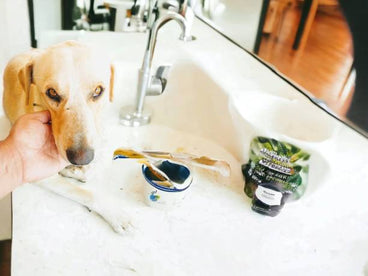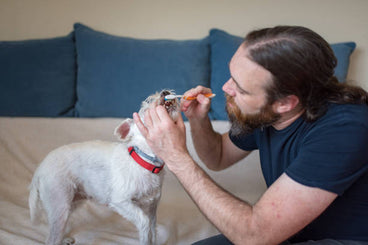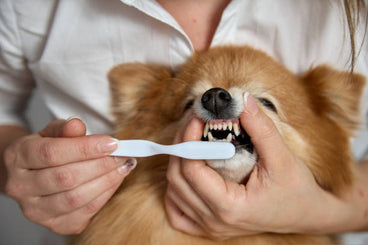Dental care is just as important for dogs as it is for humans. Without proper oral hygiene, your pup can develop plaque, tartar, bad breath, and even gum disease. The good news? You can help prevent all of that with the right toothbrush.
Why Brushing Your Dog’s Teeth Matters
Brushing your dog’s teeth helps prevent dental diseases that can affect their overall health. Bacteria in the mouth can enter the bloodstream and impact the heart, kidneys, and liver. Daily brushing is ideal, but even a few times a week can make a difference.

Types of Dog Toothbrushes
There are several types of toothbrushes designed for dogs: finger brushes, dual-head brushes, angled brushes, and electric toothbrushes. Each has its benefits depending on your dog’s size, age, and comfort level.
Finger Toothbrushes: Easy Control
Finger brushes are soft rubber brushes that fit over your fingertip. They give you more control and are great for small dogs or pups new to brushing. They're gentle on gums and easy to maneuver.
Dual-Head Toothbrushes: Versatility in One Tool
Dual-head brushes come with two brush sizes—one large and one small—on either end. They’re ideal for multi-dog households or for dogs with varying mouth sizes. These brushes clean both the outer and inner surfaces of the teeth effectively.
Angled Toothbrushes: Great for Reaching Back Teeth
Angled brushes look similar to human toothbrushes but are designed to fit the shape of a dog’s mouth. Their long handles and angled heads help you reach molars and clean thoroughly.
Choosing the Right Toothbrush for Puppies
Puppy toothbrushes are smaller and softer to suit their tiny mouths and sensitive gums. Starting dental care early helps your pup develop healthy habits.
How Often Should You Brush?
Ideally, brush your dog’s teeth every day. If that’s not possible, aim for at least 3–4 times a week. Regular brushing keeps plaque under control and avoids expensive dental cleanings down the road.
Tips for a Smooth Brushing Routine
Use toothpaste made for dogs—never human toothpaste. Start slowly, use gentle motions, and reward your dog with praise or treats afterward. Consistency and patience are key.
Signs Your Dog Needs Better Dental Care
Bad breath, red or swollen gums, drooling, or reluctance to eat can all be signs of dental problems. If you notice these, consult your vet and consider improving your dog’s at-home dental routine.
When to See a Professional
Annual dental cleanings by a vet can prevent severe dental disease. If your dog has tartar, bleeding gums, or loose teeth, it's time to see a professional.
Final Thoughts: Invest in Their Smile
Your dog’s dental health plays a major role in their overall well-being. With the right toothbrush and routine, you can keep their smile healthy and their breath fresh.







